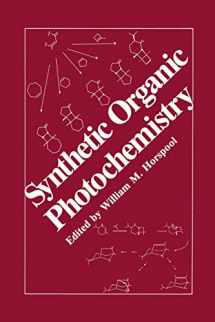
Synthetic Organic Photochemistry
Book details
Summary
Description
Of all major branches of organic chemistry, I think none has undergone such a rapid, even explosive, development during the past twenty-five years as organic photochemistry. Prior to about 1960, photochemistry was still widely regarded as a branch of physical chemistry which might perhaps have oc casional applications in the generation of free radicals. Strangely enough, this attitude to the subject had developed despite such early signs of promise as the photodimerization of anthracene first observed by Fritzsche in 1866, and some strikingly original pioneering work by Ciamician and Silber in the early years of this century. These latter workers first reported such varied photo reactions as the photoisomerization of carvenone to carvone camphor, the photodimerization of stilbene, and the photoisomerization of o-nitrobenzal dehyde to o-nitrosobenzoic acid; yet organic chemists continued for another fifty years or so to rely almost wholly on thermal rather than photochemical methods of activation in organic synthesis-truly a dark age. When my colleagues and I first began in the 1950s to study the synthetic possibilities of photoexcitation in the chemistry of benzene and its derivatives, virtually all the prior reports had indicated that benzene was stable to ultraviolet radiation. Yet I think it fair to say that more different types of photoreactions than thermal reactions of the benzene ring are now known. Comparable growth of knowledge has occurred in other branches of organic photochemistry, and photochemical techniques have in particular made possible or simplified the synthesis of numerous highly strained organic molecules.


We would LOVE it if you could help us and other readers by reviewing the book
Book review



